I designed this collection as a retrospective on the last year 2020/21. The year of the COVID pandemic has given us all time to re-evaluate our lives.
The Cyle of Life
I count myself as one of the lucky ones but I still had sad moments. On the other hand, without these negative experiences in our lives, I do not believe that we can deeply appreciate the positive times.
Artists realise the importance of negative space. For example, look at Gustav Klimt’s The Three Ages of Woman (Le tre età della donna).
On the left is a close up of the painting. The intricate painting and colours are fantastic but it is difficult to appreciate the positive female forms through all that detail.
I came to appreciate the Cycle of Life, so I also wanted my response to this year to be 100% sustainable, using only recycled materials.
I wanted my positive spaces to be full of bright and vibrant colours. Like Klimt, I wanted to draw the eye to the beautiful detail.


The Design Process
I started to explore options to create a strong and vibrant positive space.
I had been working on cloisonné enamel designs, making a tiger’s eye pendant to be auctioned for charity. I thought about using this technique to bring that splash of colour and detail.
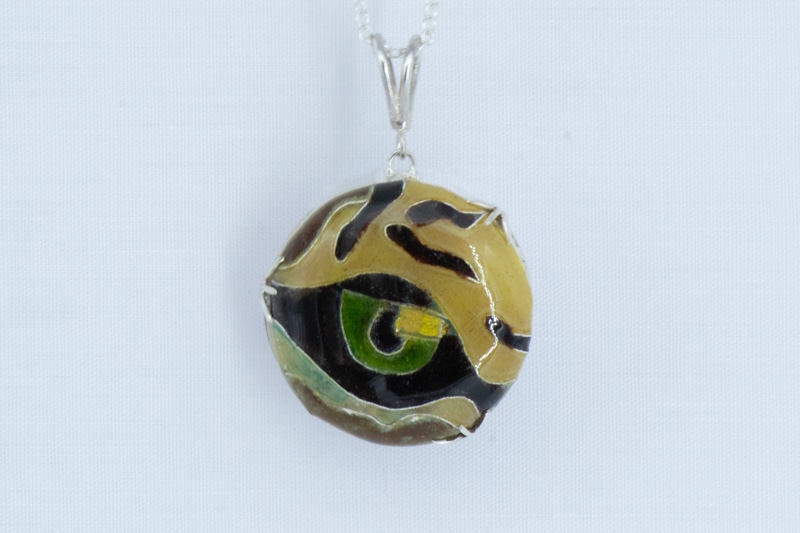
Then I visited Mdina Glass, one of Malta’s famous glass blowing companies, which makes stunningly bright coloured glass.
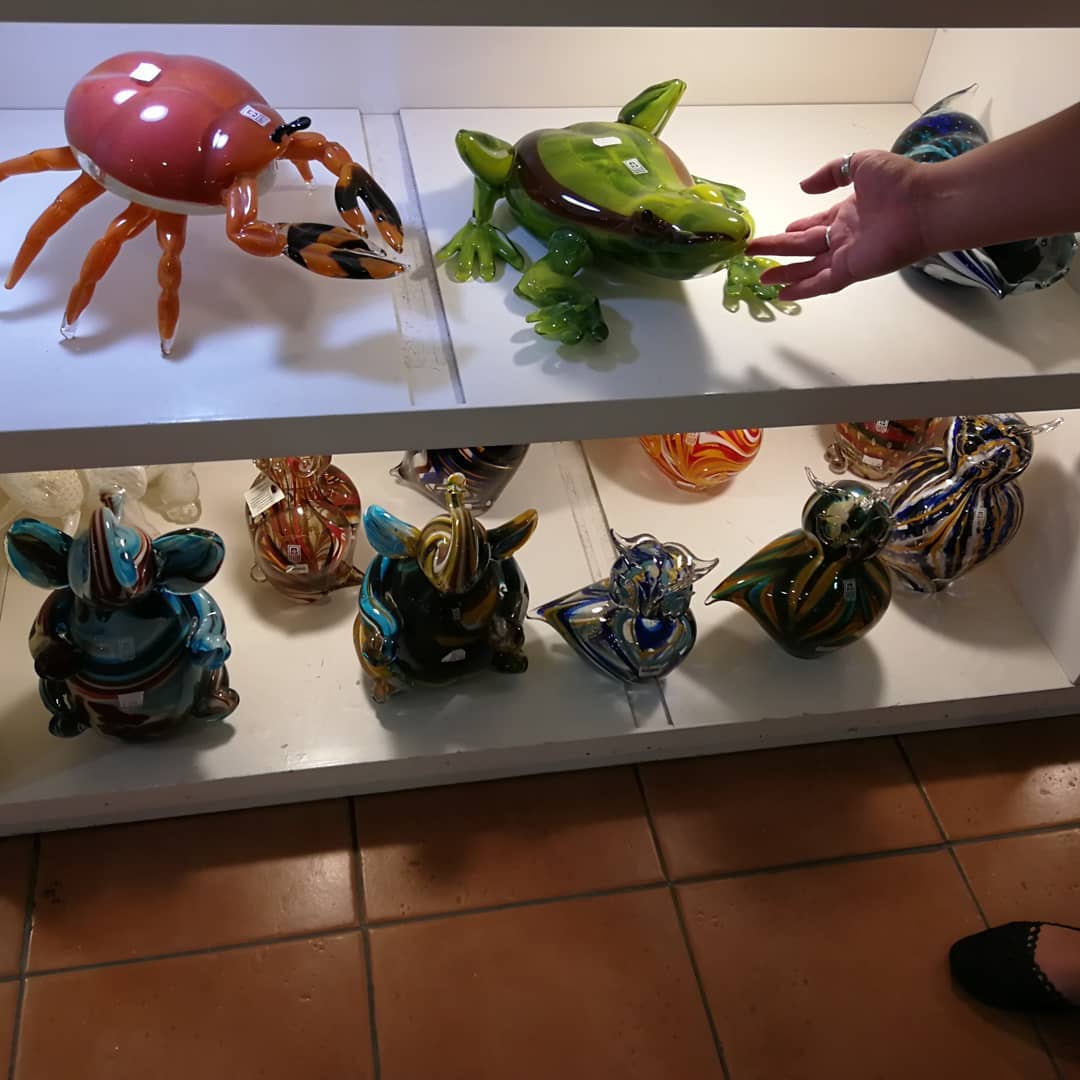
They let me buy a bag of offcuts from the glass blowing process. These were thin, twisted and pointed, in really bright colours. I had found my positive space.
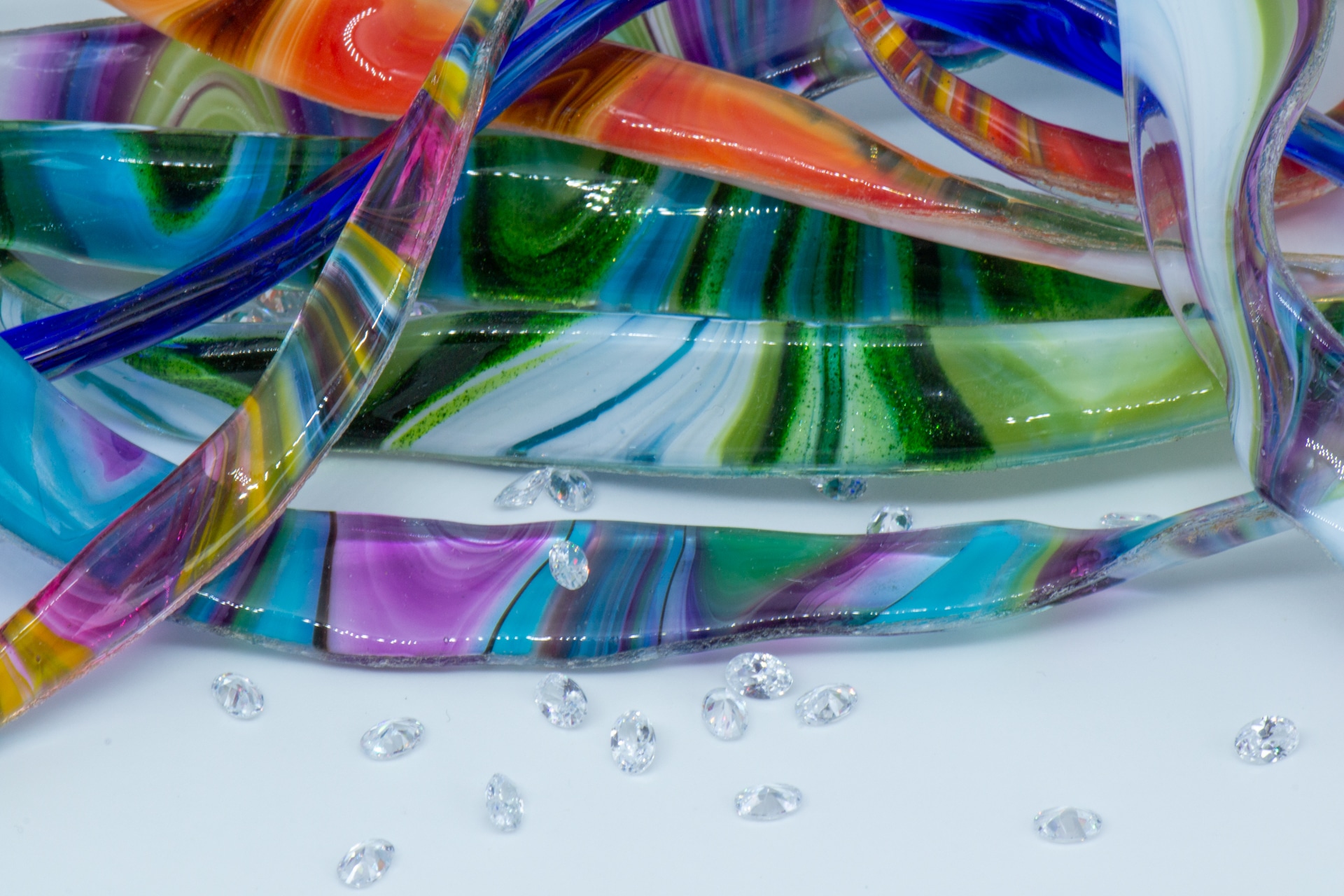
I wanted the negative space to be contoured around the glass. Experiments using silver ribbon were promising.
It was important to me that the silver did not appear to “hold” the glass in place. I wanted the silver to look as if the positive glass almost floated inside the silver negative space.
This meant it could not be wrapped tightly around the glass as a support.
The Development Process
Through the design process I realised I was going to have to break the shards of glass into smaller pieces to be used in jewellery. I tried using a glass cutter and I even tried breaking the thick glass over the edge of my desk! Eventually I succeeded in snapping the glass without destroying it completely but I could never truly control the place where the glass would snap.
Each piece of glass was a different size and curved shape with sharp edges.
I rubbed the edges with Diagrit and then melted them in my kiln. The result was a smooth and flat piece of glass. I even managed to fuse together shards which had snapped into smaller, less unusable pieces.
The real challenge was how to make the glass feel like it is floating inside a frame of silver.
As an enameller, the answer seemed simple. I decided to fuse the back of the glass to the silver, which would let me leave spaces around all the sides and in front of the glass.
If only it was that simple!
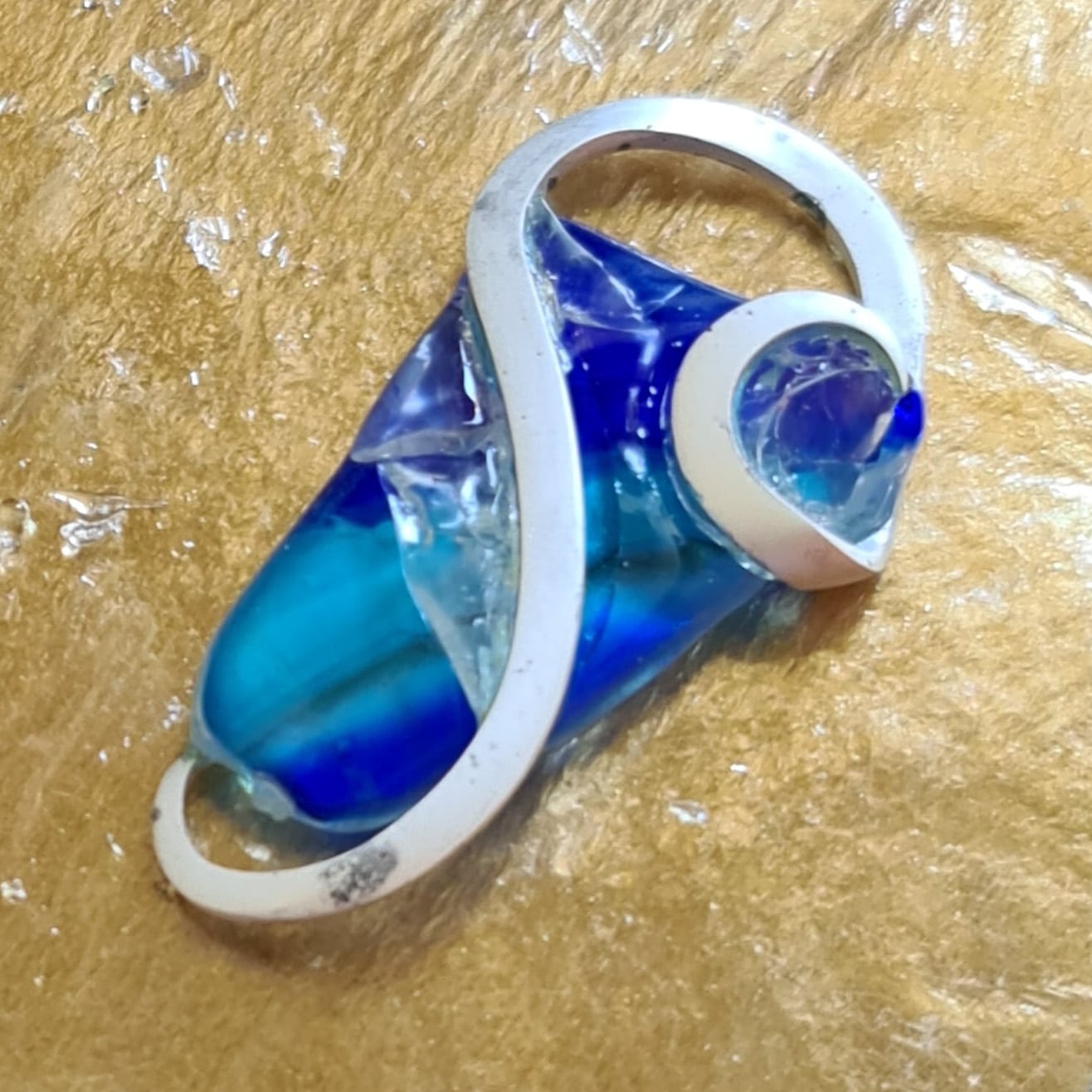
I kept experiencing failures. The silver and glass cooled at different rates and almost every experiment resulted in the glass shattering around the silver.
I began to research the problem. I could not find anything useful online to stop the glass cracking.
I called the glass factory but they did not have the answer because they never re-heat the glass and have no experience of working with silver.
Then I called a friend who is a glassblower in Scotland working for Angels’ Share. She explained how I could find the right cooling temperatures but I needed to know the type of glass I was using. Sadly, I had no idea and the glass company would not share.
It took me over 1 month before my experiments paid off. I had developed a heating programme which worked most of the time. There were still a few disasters where glass shattered but I succeeded more than I failed.

Artists talk about “Happy Accidents” which are unplanned situations which lead to a new way of working.
My happy accident was when I realised that the silver frames were just as beautiful and elegant without the glass. I decided to add the open silver frames to the collection.
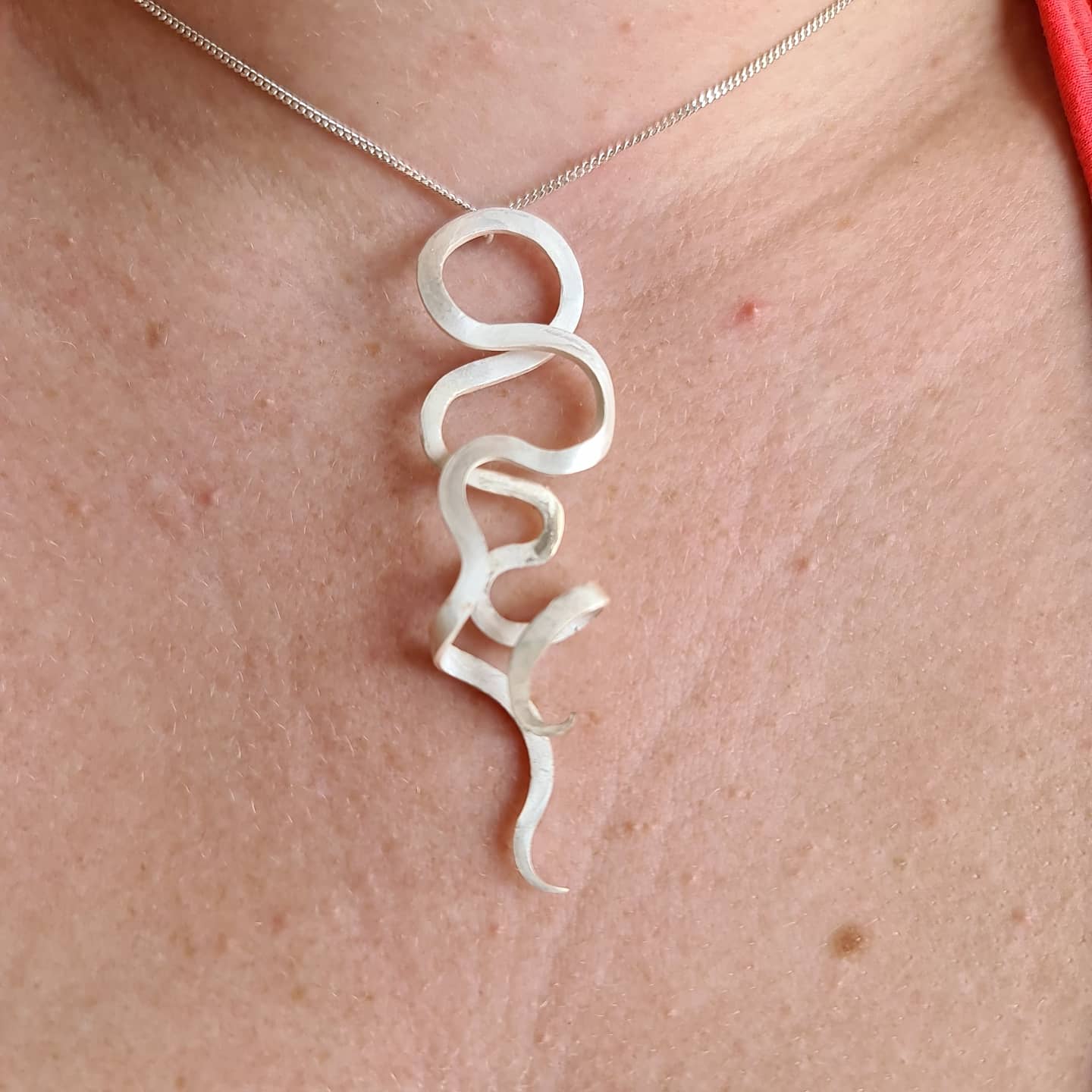
I also wanted to create a cuff bangle in the same style but instead of glass positive spaces, I wanted to include semi-precious gemstones.
I chose an irregularly shaped Australian boulder opal with flashes of green veins, a round purple amethyst and an oval reticulated quartz which is clear with black lines, all recovered from antique jewellery.
Then I designed the cuff using similar silver ribbon to create negative spaces around the juxtaposition of the different stones.
Creating The Jewellery Collection
The shards of glass were most suited to be created into pendants or rings.
The designs created without the glass, only using curved silver ribbon, were light enough to let me add earrings to the collection.



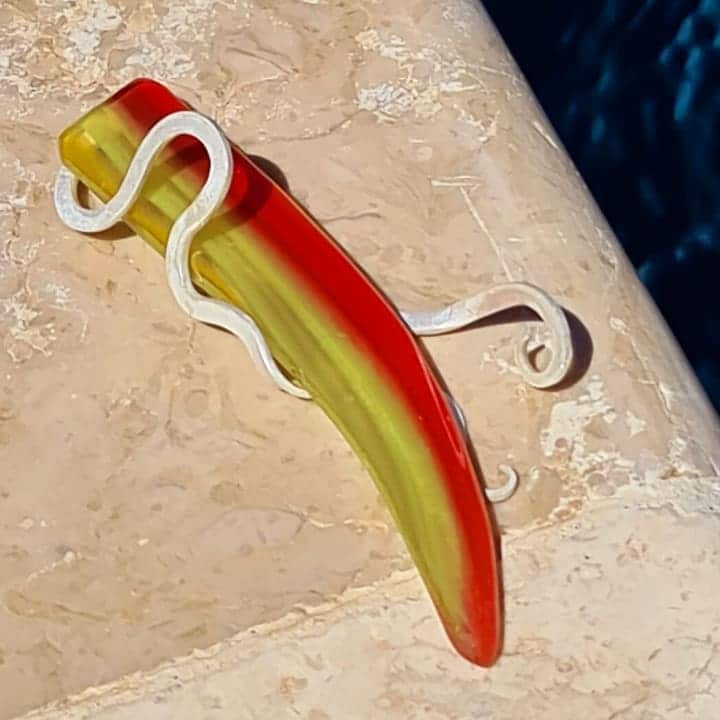
Later in the creation phase I felt some pieces would benefit from a touch of bling, so I decided to add a manufactured cubic zirconium or a circle of contemporary filigree to some of the designs.
Some of the glass showed signs of the heating process it had been through. Pieces which had broken had lines and some surfaces were slightly mottled. I smoothed these down but still left signs of the process which I think makes them special.

The cuff bangle was difficult to create because the gemstones had to be set at different angles to the silver cuff.
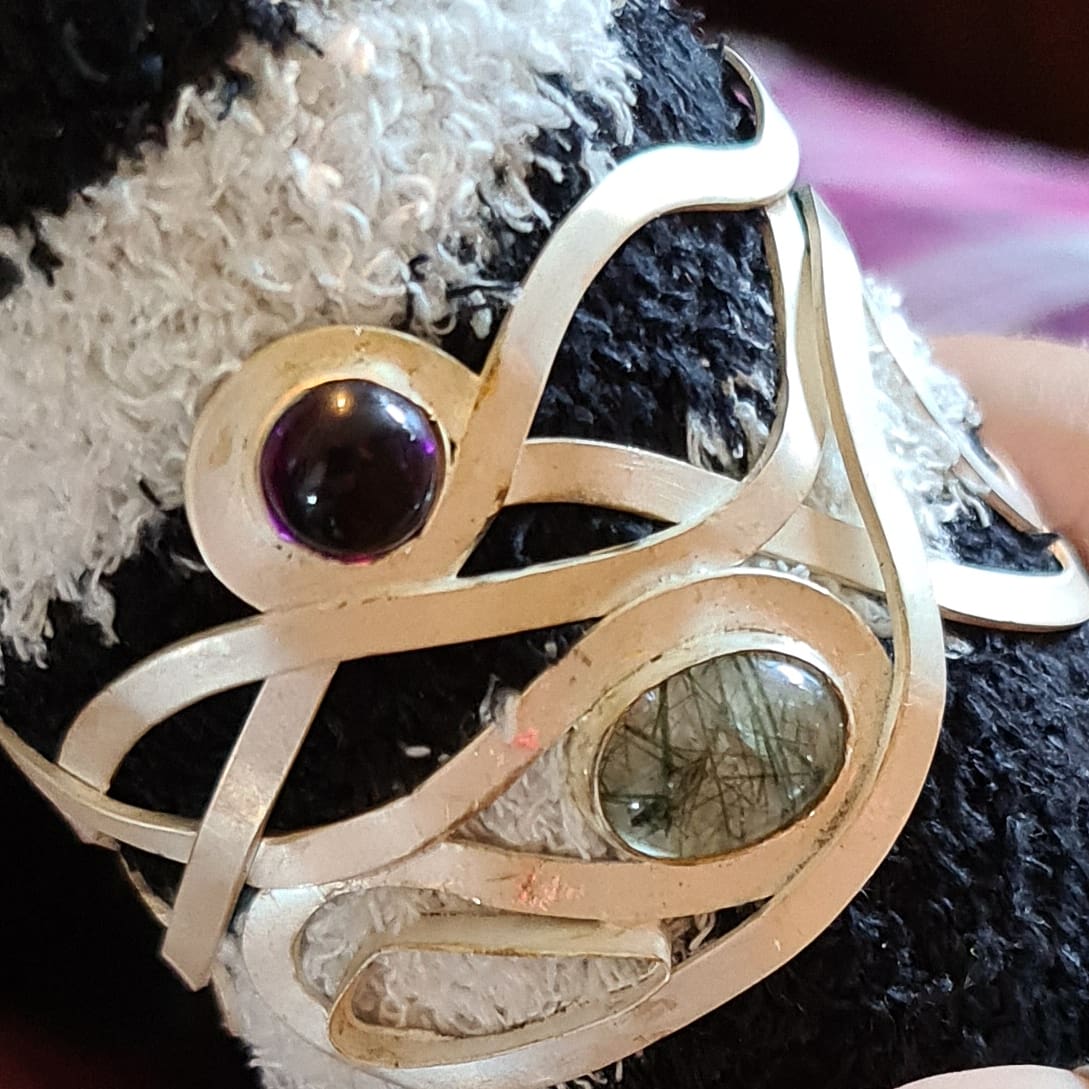
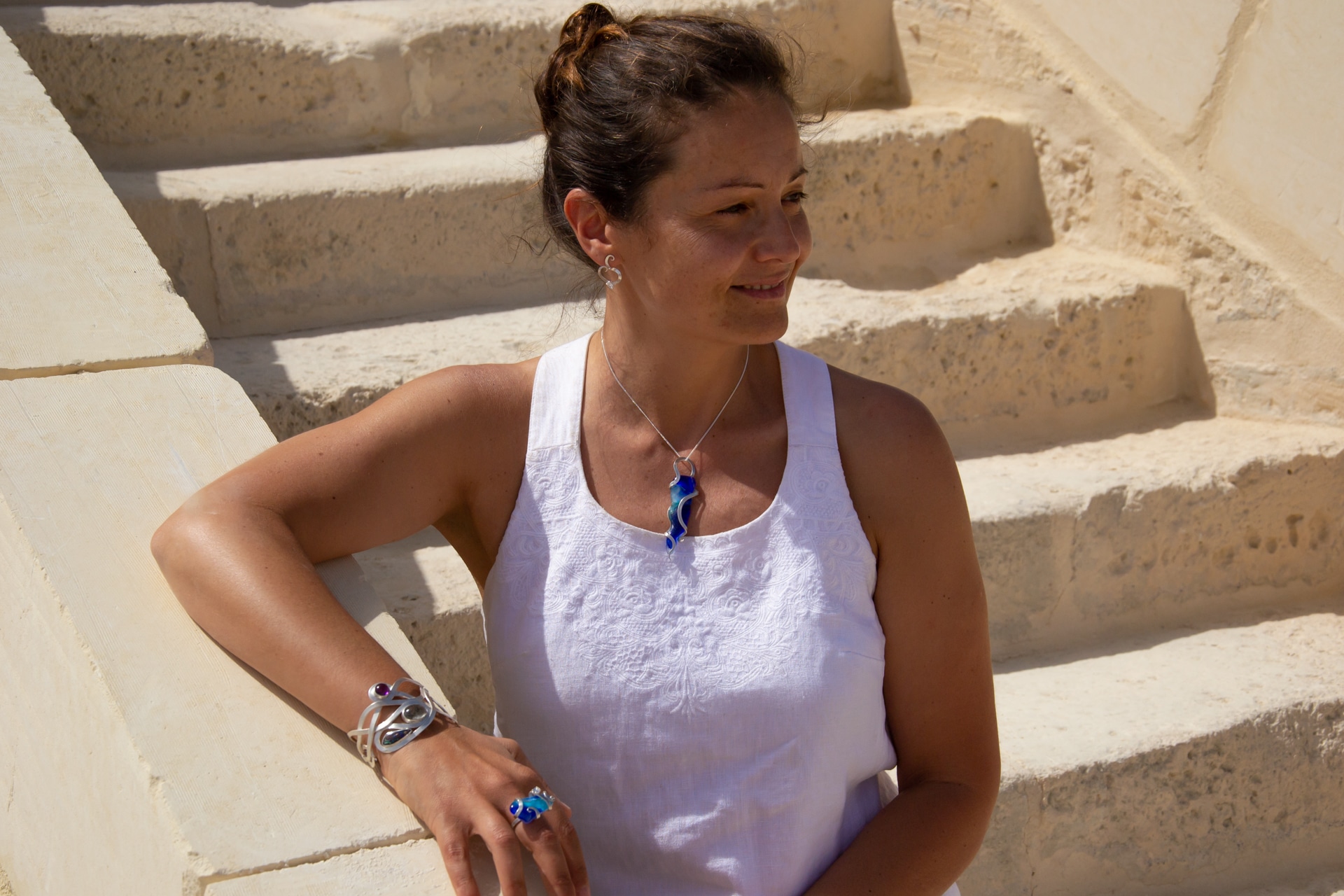
The collection will feature in the August 2021 edition of British Vogue covering emerging young jewellery designers.
It is sustainable, using recycled glass, eco-silver and manufactured stones where possible.
